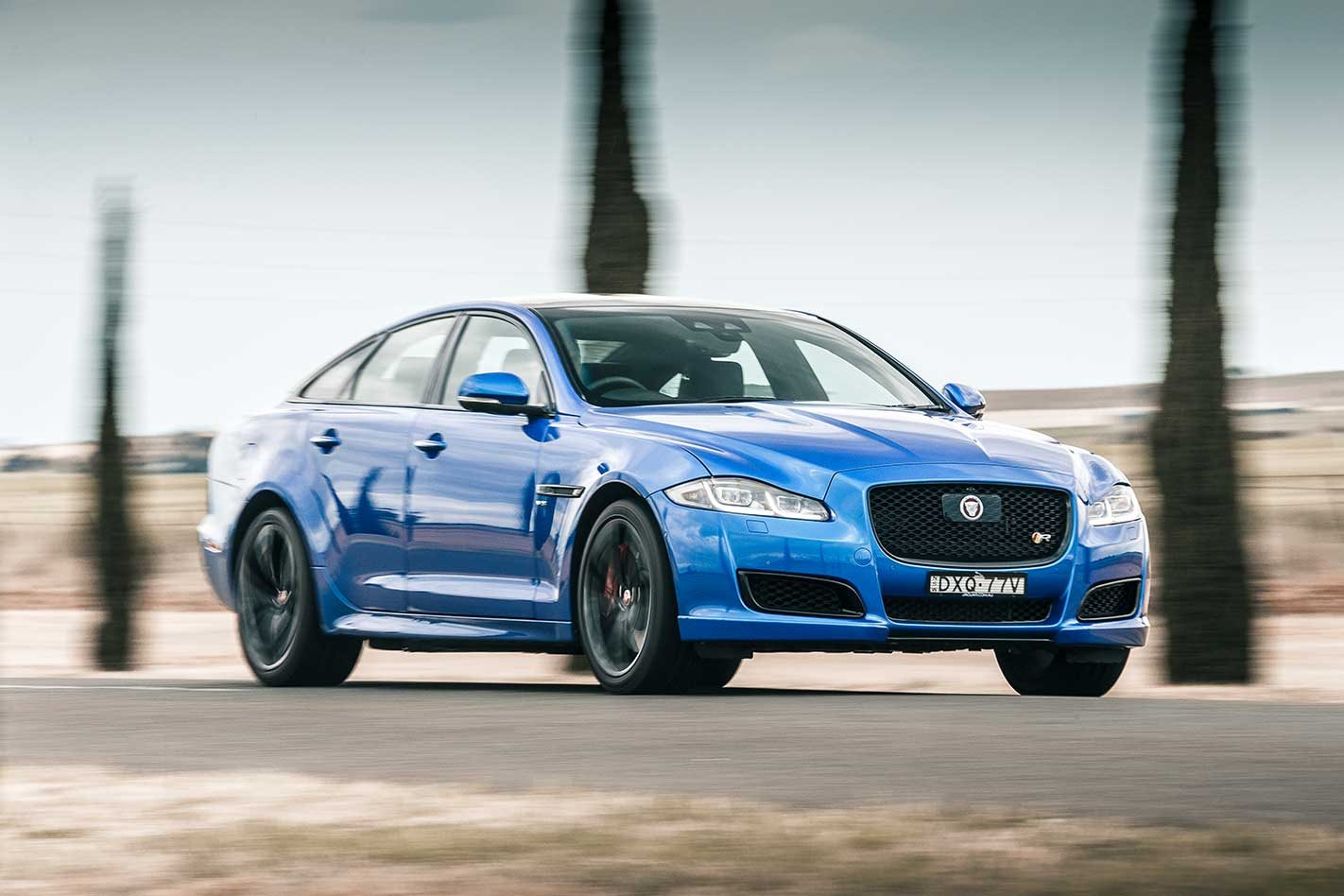“She’s the last of the V8s… it’s the duck’s guts… 600 horsepower through the wheels.”
Forty years ago, the roads west of Melbourne rumbled to the sound of a Cleveland 351ci V8 as George Miller completed filming Mad Max. Its plot examined issues of violence, grief and revenge, but it’s best remembered as a celebration of horsepower, primarily thanks to the screaming, supercharged, nitro-fuelled Pursuit Special driven by Mel Gibson in his role as Max Rockatansky.
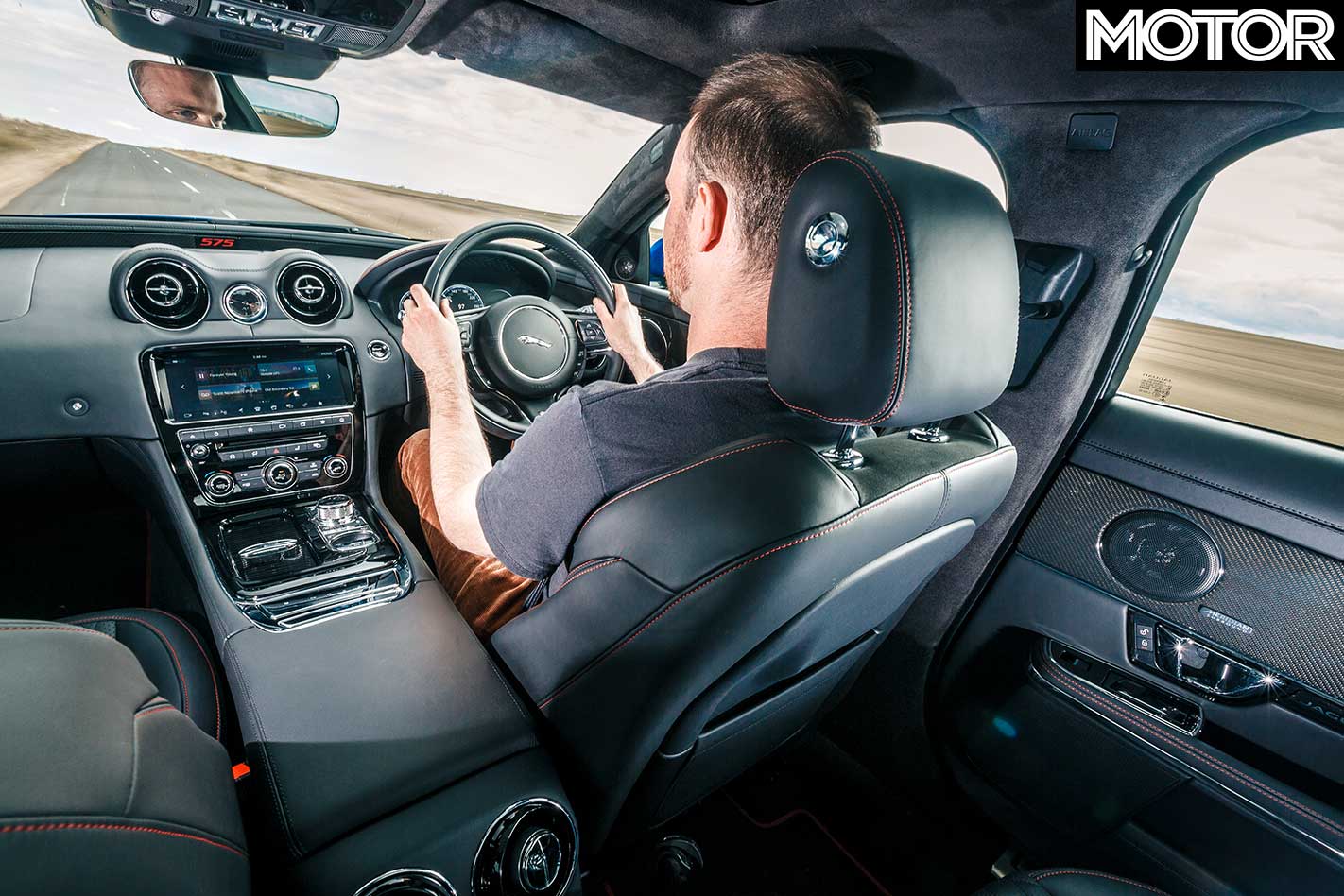
Melbourne’s urban sprawl is expanding rapidly, but the roads and scenery between Little River in the south, Bacchus Marsh in the north and Meredith in the west have changed little since 1978. Ruler-straight B-roads disappear into a heat-hazed horizon, intersecting the vast, straw-coloured fields that gave Mad Max its semi-apocalyptic vibe.
It might seem an odd place to test the Jaguar XJR575, but Coventry’s latest supercharged V8 limo is almost certainly its last. Jaguar head of design, Ian Callum, is on record as stating the new XJ, expected to appear in early 2019, will be bigger, roomier, filled with cutting-edge tech and look radically different to the traditional limousine.
It’s also expected to be powered purely by electricity, using technology transfer from the i-Pace crossover. The XJR575, then, is the last of the V8s.
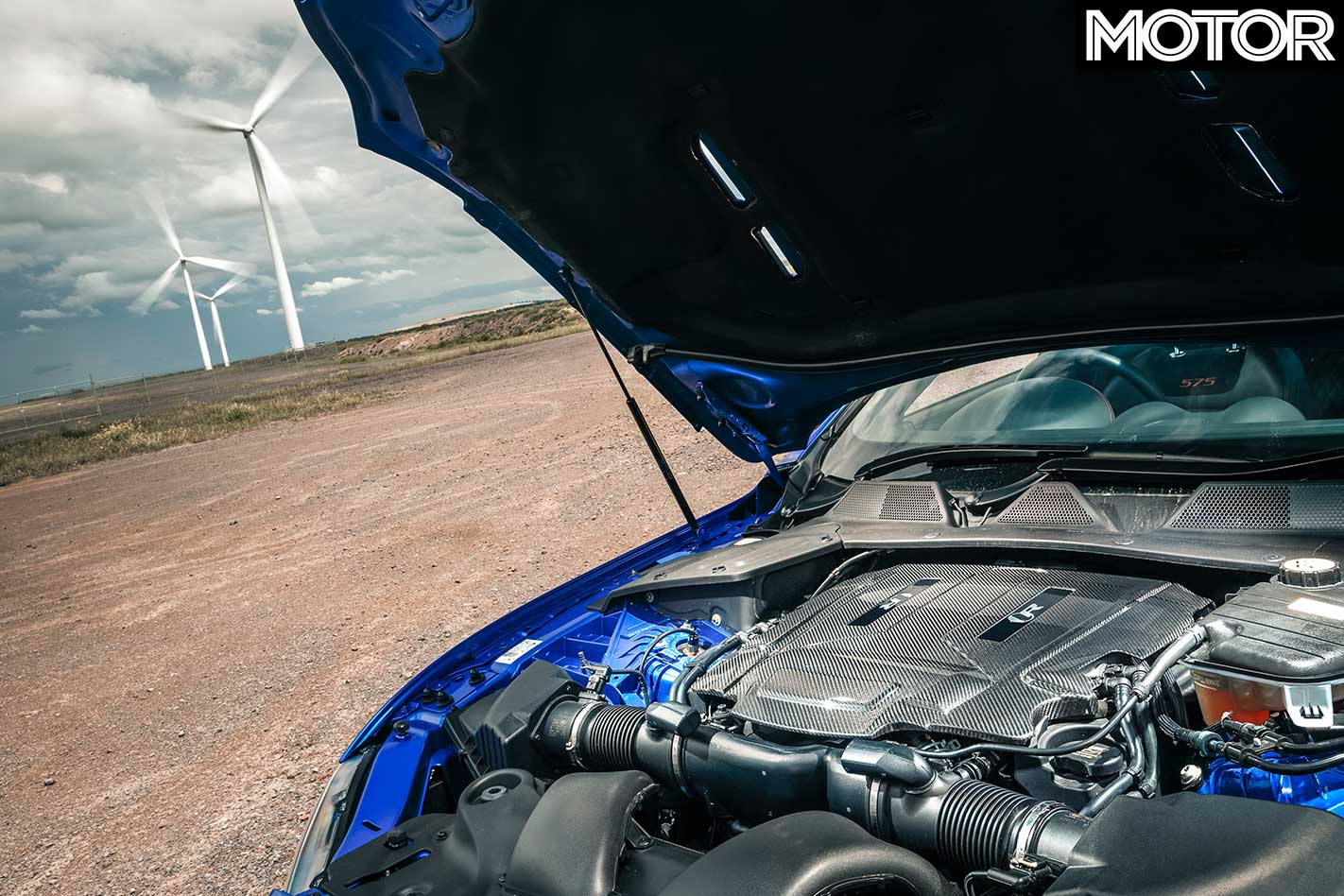
The XJ’s flagship status makes it the sensible choice to, i-Pace aside, lead Jaguar’s electrically powered charge. After all, the X350 XJ (2003-2009) was Jaguar’s first all-aluminium car and the current X351 a stylistic game changer, taking the ‘new Jaguar’ look debuted by the XF and developing it with a large, square grille and vertical tail-lights, intended to mimic a cat’s claws. In design terms, it was like replacing the Queen Mary with the Starship Enterprise.
As you’d expect, the bold looks polarised at the time, but the benefit is a design that still looks fresh today, especially in the vibrant 575-exclusive Velocity Blue of our test car. If you’re colour-blind, you can spot an XJR575 via the revised rear spoiler, side sills, bumper, splitter and lower air intakes, which also feature gloss black surrounds. Twenty-inch wheels of the same hue shelter vivid red brake calipers, or you could just look at the badge. The unusual shapes and squinty headlights won’t be to everyone’s taste, but it is distinctive and its size – 5.1m long and 1.95m wide – lends it plenty of presence.
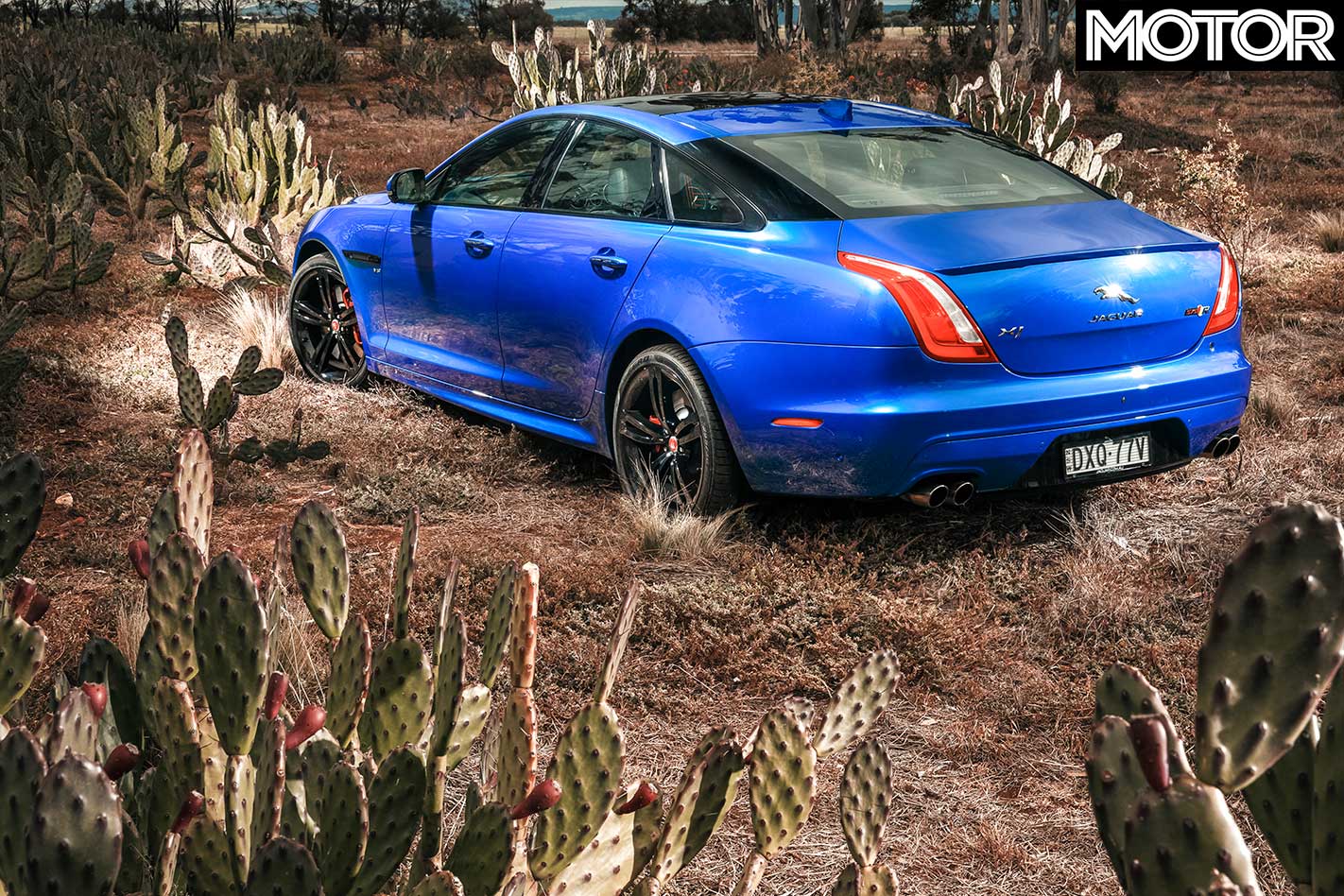
Inside, there are more badges on the sills, dash and diamond-quilted sports seats. The interior of an XJR575 is a quirky place, but I love it. Some details frustrate: the touchscreen isn’t the world’s slickest, figuring out the digital dash’s sub-menus takes practice, the rotary gear selector is great until the first three-point turn and why is the steering wheel rim split into two sections?
Nonetheless, the materials are lovely, glossy carbon weave, acres of leather and the fluffiest Alcantara known to man, the roof and pillars covered in what feels like shagpile bath towels. Best of all, though, is the enormous crescent that encircles the dash and joins the tops of the doors like the rim of a giant leather-trimmed bathtub.
According to Jaguar, one of the biggest bugbears of current XJ owners is the lack of interior space, particularly those in the far-east who prefer to be driven than drive. To be honest, the XJR575 isn’t the ideal chauffeur vehicle.
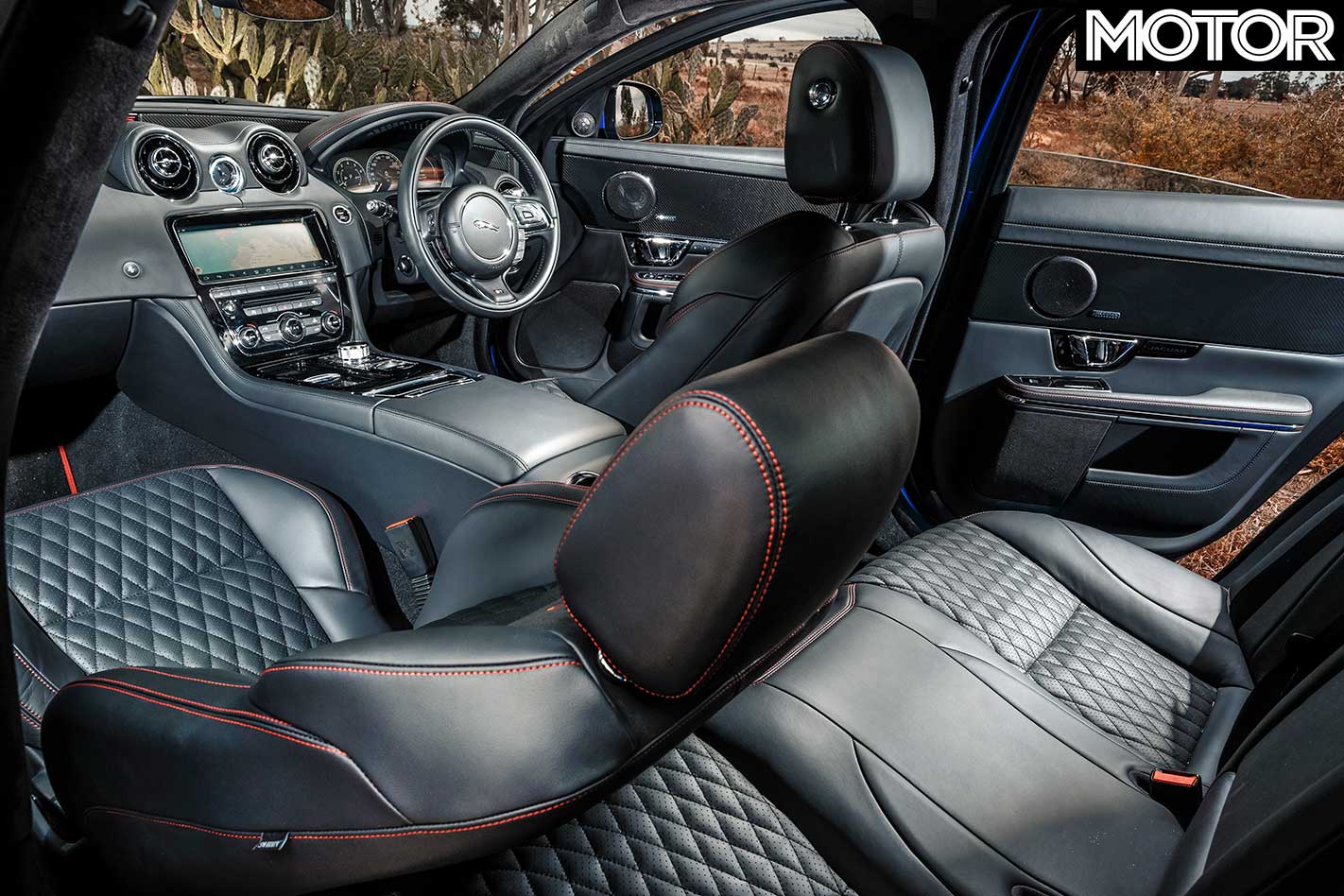
The ride is comfortable enough on smooth roads, but busy on broken tarmac to the point that selecting Dynamic for stiffer dampers almost feels to improve matters – it’s firmer, but somehow more cohesive. Such is the contradiction of the sporting limousine: the XJ, particularly in R guise, wants to involve rather than isolate in the manner of the equivalently priced Mercedes-Benz S560.
Thankfully, it’s not all straight roads out here. Towards the town of Meredith a series of sweepers curve steeply downhill, each a little tighter than the previous. A Ford Focus RS would eat it up, but it’s a stern test of something weighing two tonnes.
The Jag’s steering is accurate, responsive and well-geared, but a little mute in its feedback, making caution the better part of valour for initial dynamic explorations. Quickly it becomes clear the XJR575 has much deeper reserves than initially apparent. In fact, it comes alive as the tyres start to squirm, edging onto its tiptoes rather than sinking into an understeering sulk.
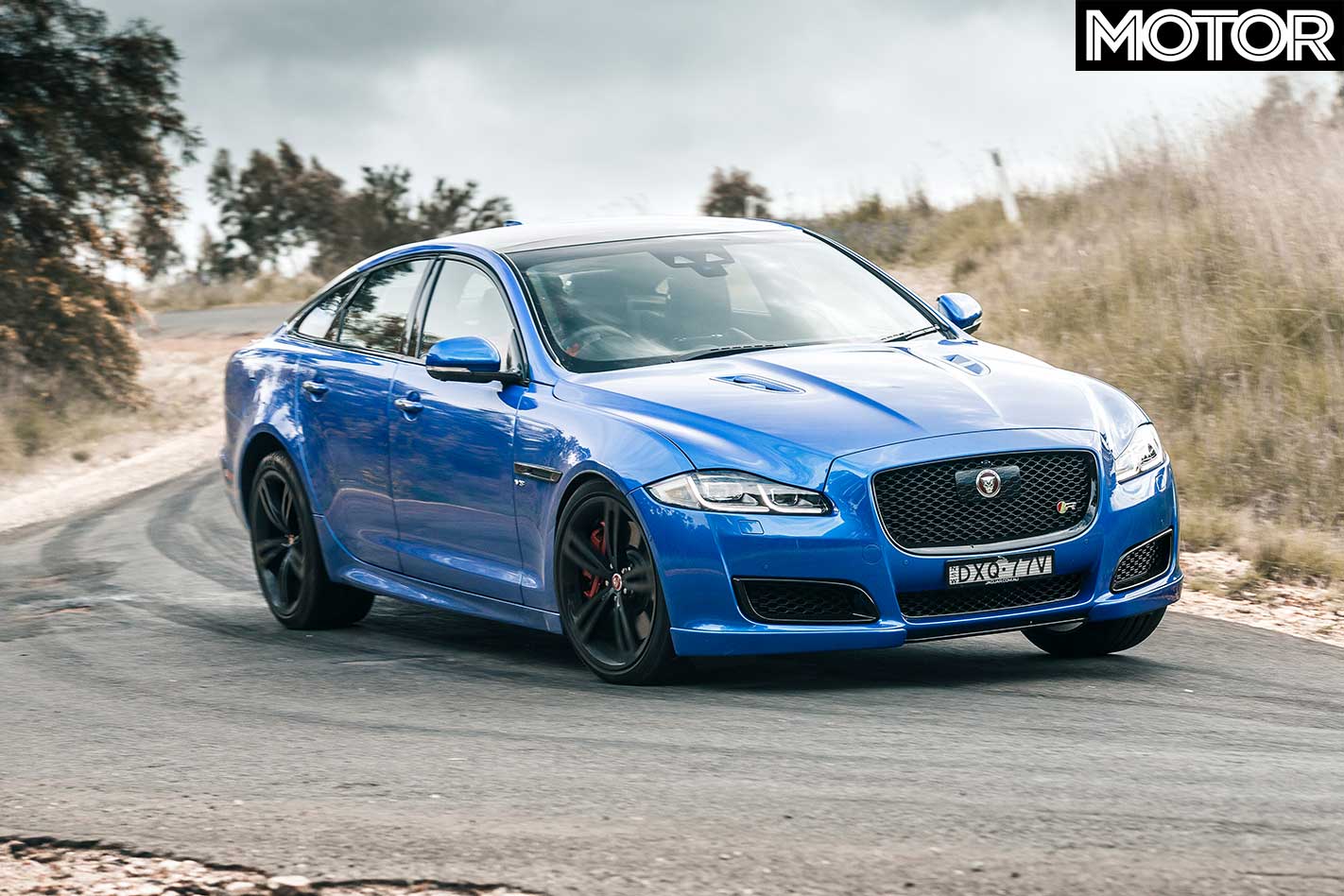
Grip levels are very strong. The XJR575 wears plenty of rubber, Pirelli P Zeros measuring 265/35 at the front and 295/30 at the rear, though it leans on them very hard, the pillow-soft tyres showing early signs of wear after even our limited stints of hard driving.
Nonetheless, there is tremendous balance; at the limit of grip it feels poised and gives the driver options. Gentle understeer can be quelled with a lift of the accelerator, while a neutral stance can easily become one of slight oversteer with more throttle, antics the TracDSC mode is happy to allow, sitting with its feet up until actually required.
With the electronics deactivated the XJR575 is the consummate drift car. Jaguar Land Rover’s chief engineer, Mike Cross, is an extremely accomplished oversteerer and his familiarity with opposite lock is evident in the progressive way the big Jag loses traction.
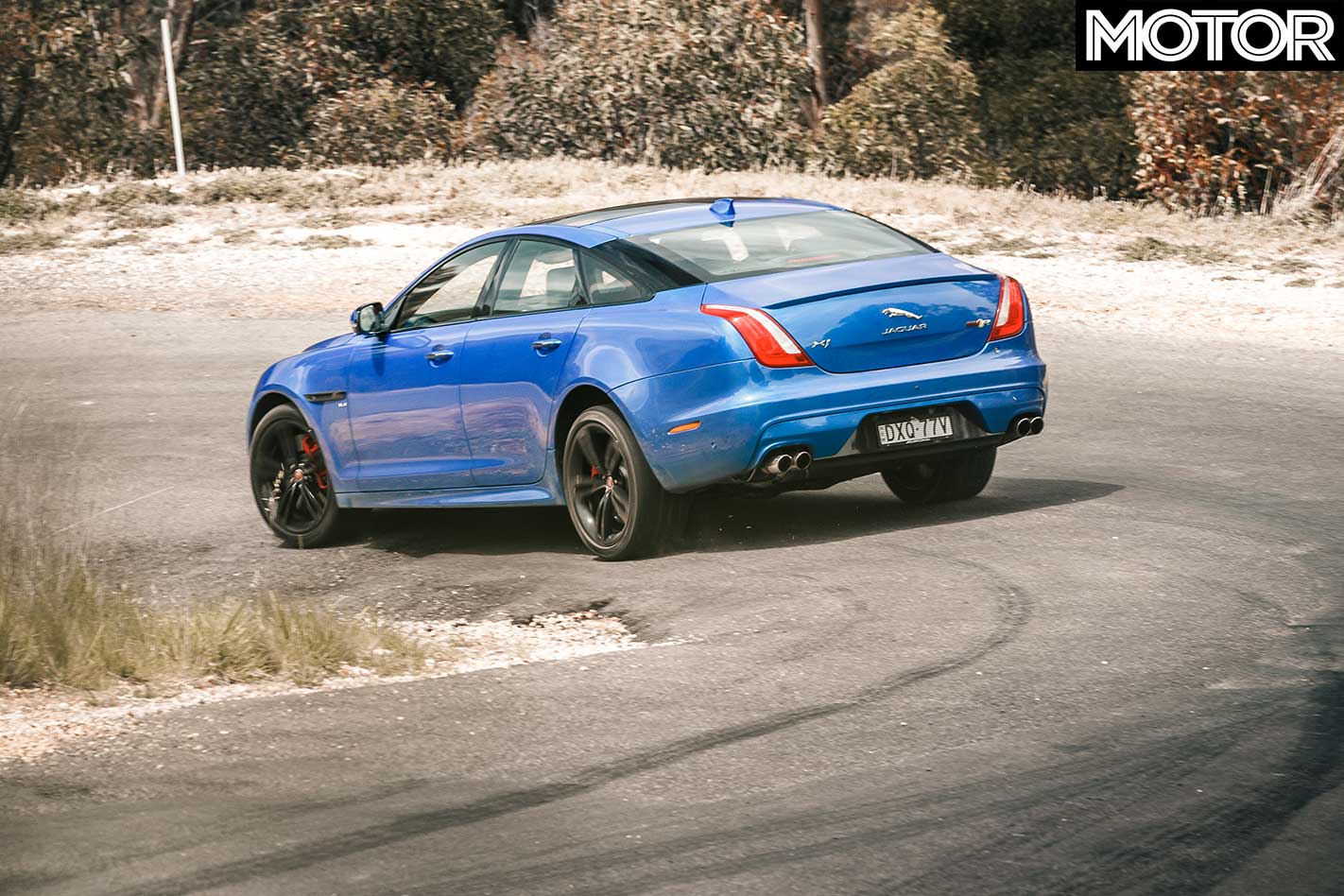
Ultimately, the XJR can’t escape its weight. The brakes work hard, though it stops from 100km/h in a very respectable 34.79m, and even in Dynamic the suspension is quite soft, so inputs need to be telegraphed early as there’s the slightest delay before a response occurs. There’s also the occasional audible clunk from the front end, which isn’t ideal in a $300,000 car.
A much more frequent noise is the burble from the V8 under the bonnet. Unlike Max’s Interceptor, the XJR doesn’t manage 600bhp, but 567bhp isn’t far short and it doesn’t need nitro to do it, just 5000cc and a supercharger. In Aussie-speak, that’s 423kW backed by a fat 700Nm in the mid-range.
There isn’t the shove from just above idle typical of the latest turbocharged Germans, but Jag’s blown bent-eight counters with a seamless surge of grunt that builds from a torrent to a flood as the needle sweeps across the dial.
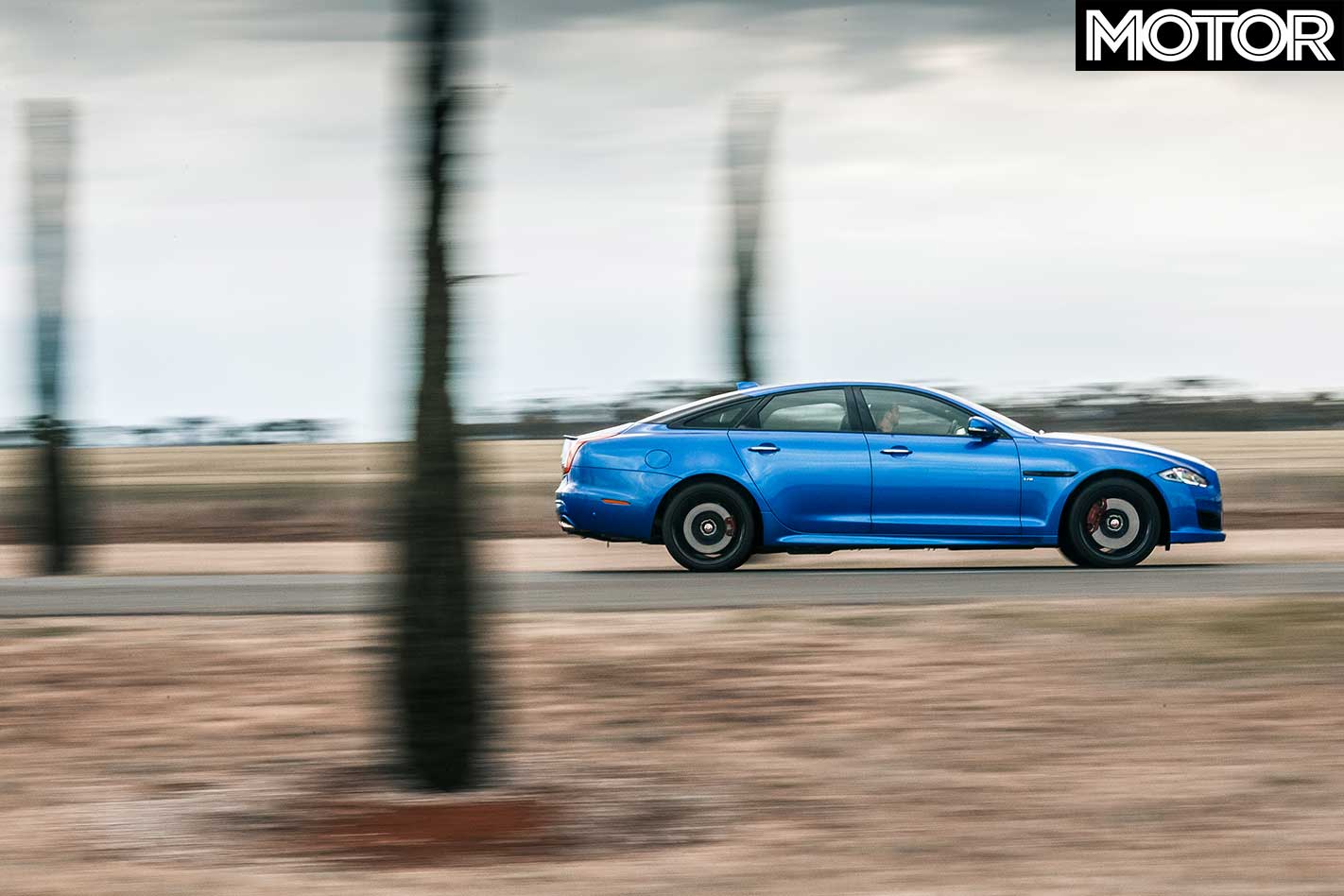
As ever with a supercharged engine, the linear nature of the power delivery somewhat disguises the XJR’s potency. It’s a very, very fast car, as the 12.45sec quarter mile at 191.79km/h illustrates. It’s fairly easy to launch, too, recording 4.46sec to 100km/h, within fractions of the 4.4sec claim, and it monsters the mid-range overtaking test, blitzing from 80-120km/h in 2.34sec.
The smoother power delivery also makes for an easier, more rewarding driving experience than that offered by harder-hitting, but more unpredictable turbo’d rivals. Equally, the eight-speed auto is the perfect partner, smooth and unobtrusive in daily use yet quick enough in its manual changes for any supposed speed difference compared to a dual-clutch to feel a bit irrelevant.
The biggest disappointment with this otherwise gem of an engine is its noise output never reaches the same intensity as its acceleration. The identically powered Range Rover Sport SVR bellows and snarls and crackles, yet the Jaguar is altogether more polite. It’s a soundtrack that feels entirely appropriate for the more mild-mannered XJ Autobiography, but the ultimate XJR surely deserves more attitude? Those who don’t appreciate the racket could always turn the exhaust button off.
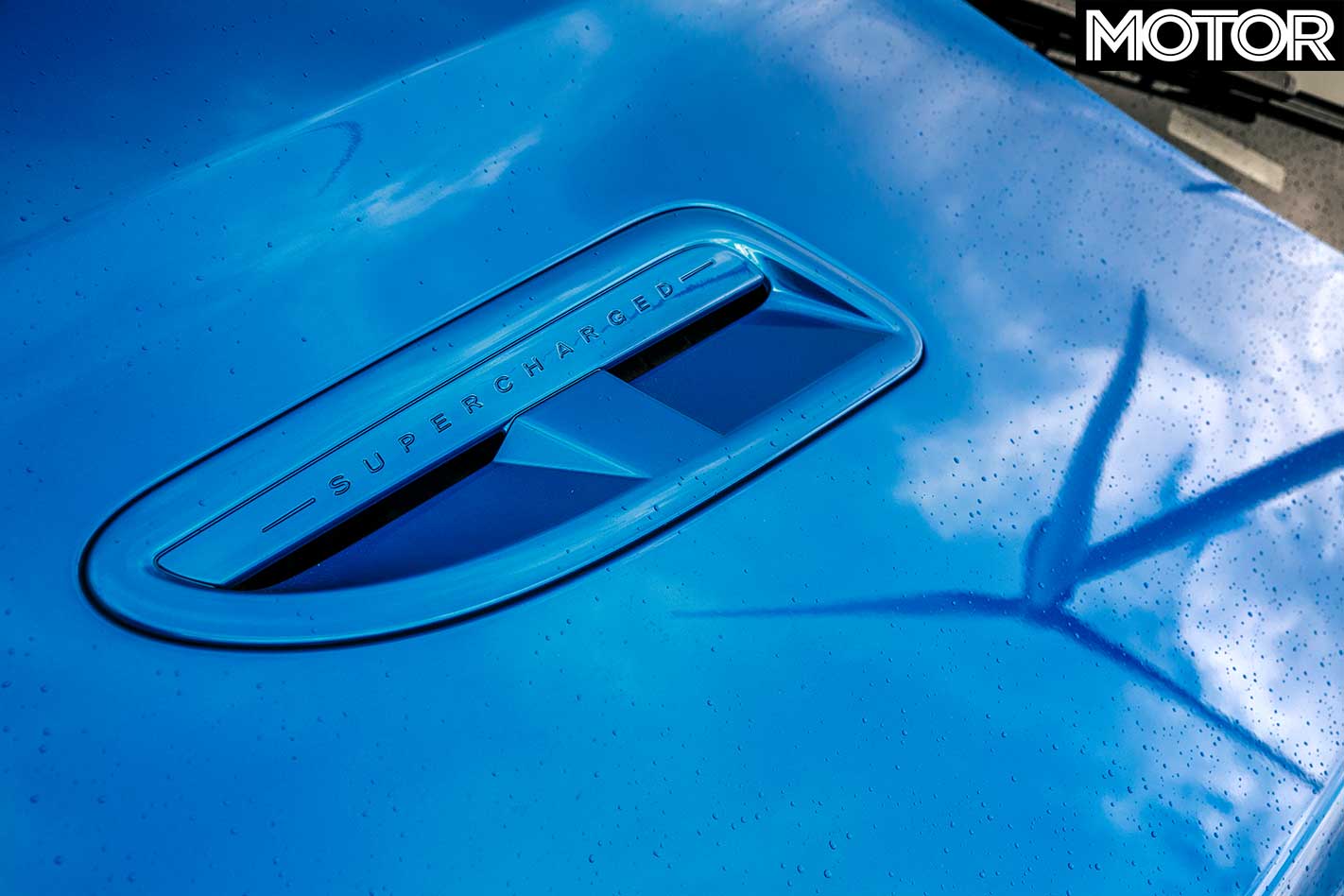
Sporting limousines are by definition a contradiction. Most sacrifice outright ability for greater comfort and refinement; the Audi S8, BMW M760Li and even the Mercedes-AMG S63 L feel built more for the autobahn than the Alps.
Jaguar takes a different tack; the XJR is unapologetically a driver’s car. As such, it’s objectively flawed: the occasionally terse ride is an everyday annoyance and it’s almost hilariously short of traction in the wet.
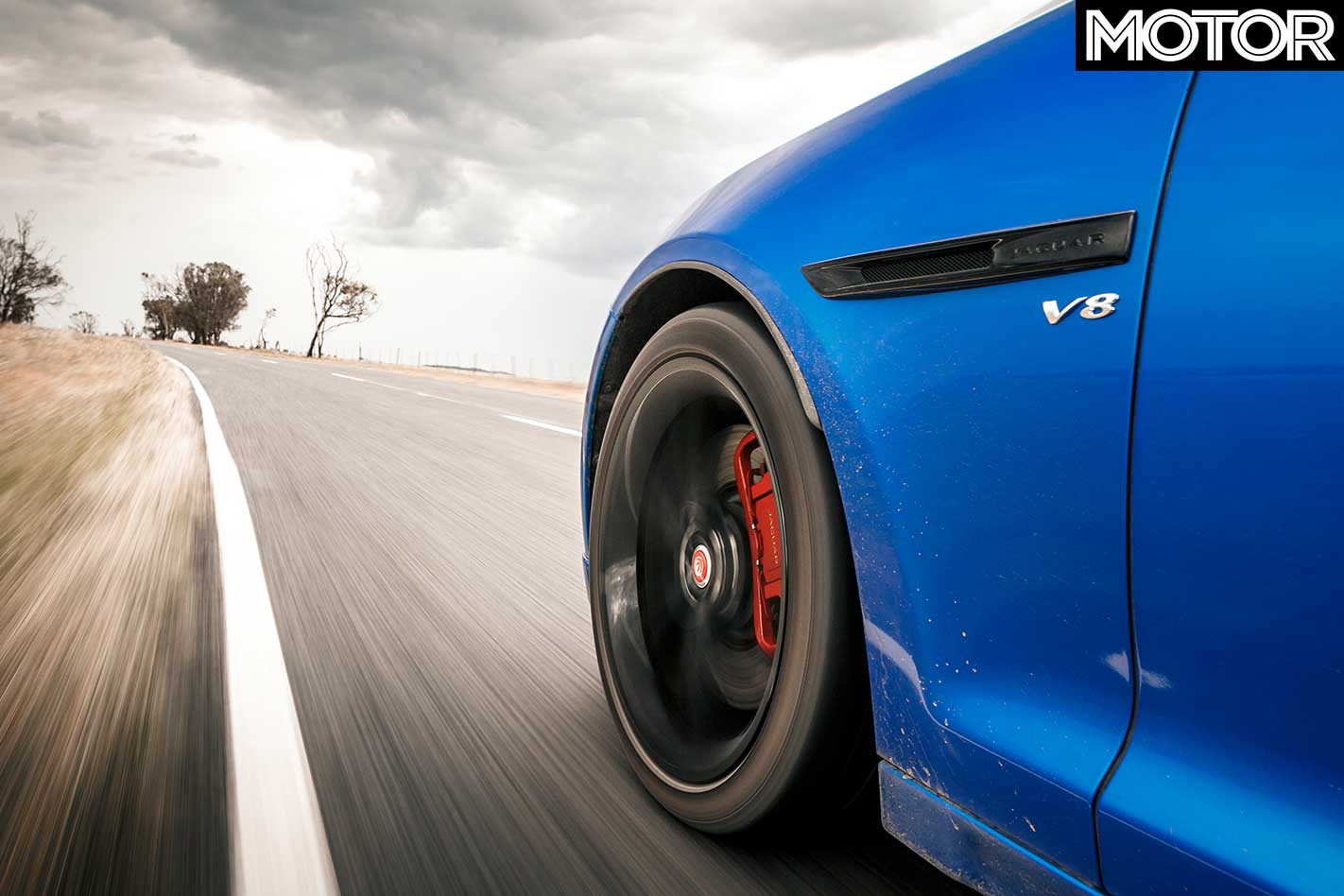
Yet it’s also an extremely easy car to fall for – a Panamera Turbo is better in virtually every area bar price, yet personally I’d rather have the Jag. It’s living on borrowed time – in fact, in Europe the XJR575 is already dead thanks to the introduction of the new WLTP emission regulations. It’s a shame Jaguar is unlikely to make cars like this anymore; it’s very good at it. Ian Callum promises the electric XJ will still be a driver’s car, but it won’t be like this one.
This one’s the last of the V8s, it’s the duck’s guts.
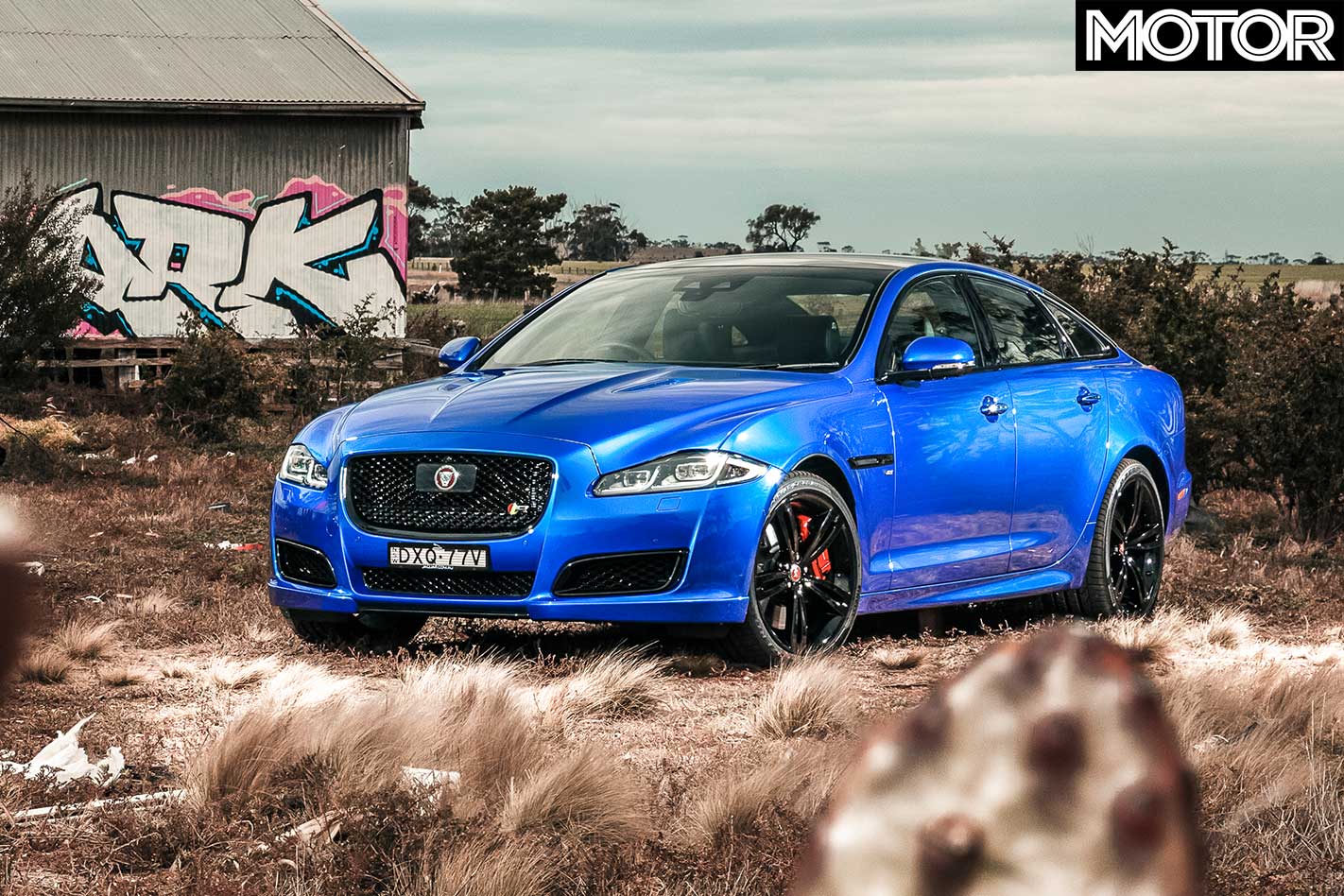
FAST FACTS 2018 Jaguar XJR575
BODY: 4-door, 5-seat sedan DRIVE: rear-wheel ENGINE: 5000cc V8, DOHC, 32v, supercharged BORE/STROKE: 92.5 x 93.0mm COMPRESSION: 9.6:1 POWER: 423kW @ 6250-6500rpm TORQUE: 700Nm @ 3500-4500rpm WEIGHT: 1875kg POWER-TO-WEIGHT: 226kW/tonne TRANSMISSION: 8-speed automatic SUSPENSION: double wishbone, adaptive dampers, anti-roll bar (f/r) L/W/h: 5130/1950/1460mm WHEELBASE: 3032mm TRACKS: 1626/1604mm (f/r) STEERING: electrically assisted rack-and-pinion BRAKES: 380mm ventilated discs, 2-piston caliper (f); 376mm ventilated discs, single-piston caliper (r) WHEELS: 20 x 9.0-inch (f); 20 x 10-inch (r) TYRES: Pirelli P Zero; 265/35 ZR20 (f); 295/30 ZR20 (r) PRICE: $306,475 ($312,735 as tested)
PROS: Dramatic looks; supercharged stonk; balance CONS: Needs more noise; ride; brake feel; last of its kind RATING: 4 out of 5 stars
The Strip
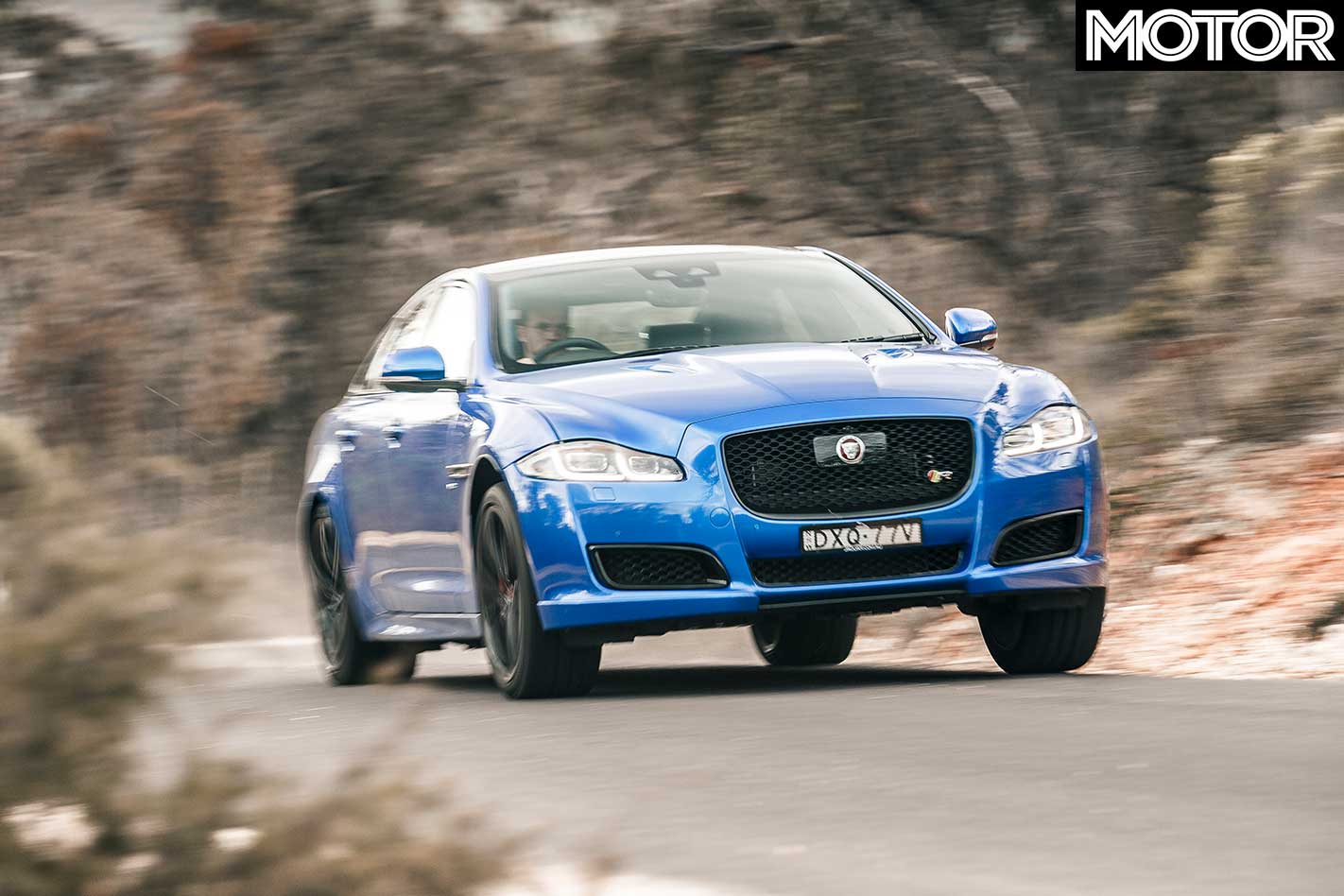
| Jaguar XJR575 | |
| 0-10km/h | 0.48sec |
| 0-20km/h | 0.88sec |
| 0-30km/h | 1.25sec |
| 0-40km/h | 1.63sec |
| 0-50km/h | 2.01sec |
| 0-60km/h | 2.41sec |
| 0-70km/h | 2.95sec |
| 0-80km/h | 3.48sec |
| 0-90km/h | 3.89sec |
| 0-100km/h | 4.46sec |
| 0-110km/h | 5.10sec |
| 0-120km/h | 5.80sec |
| 0-130km/h | 6.52sec |
| 0-140km/h | 7.27sec |
| 0-150km/h | 8.09sec |
| 0-160km/h | 9.08sec |
| 0-170km/h | 10.08sec |
| 0-180km/h | 11.12sec |
| 0-190km/h | 12.22sec |
| 0-400m | 12.45sec @ 191.79km/h |
| 80-120km/h | 2.34sec |
| 100-0km/h | 34.79m |
| Speed in gears | |
| 1st | 73km/h @ 6800rpm |
| 2nd | 109km/h @ 6800rpm |
| 3rd | 163km/h @ 6800rpm |
| 4th | 206km/h @ 6800rpm |
| 5th | 267km/h @ 6800rpm |
| 6th | 300km/h @ 5950rpm* |
| 7th | 300km/h @ 4990rpm* |
| 8th | 300km/h @ 3970rpm* |
Heathcote Dragway, 16˚C, dry. Driver: Scott Newman *Manufacturer’s claim


